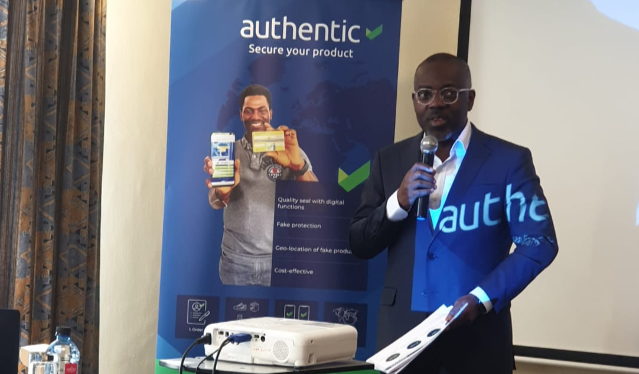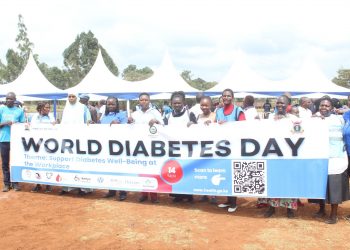In a bid to offer technology that aims to rid Kenyan Market from Counterfeits-Authentic. Network-a German based start-up has introduced a digital seal that will make it possible to detect dangerous counterfeit drugs circulating in the market.
According to Frank Theeg Chief executive officer (CEO) authentic users such as pharmacist or patient – are now able to verify immediately via an app whether the drugs in question are genuine or counterfeit.
“This technology can solve the global counterfeit problem,” he said, adding that “The key to this is blockchain technology, that can identify product usage patterns, analyzes them, and detects fakes.”
According to Omotunde Kasali, Africa business development, authentic. network is a blockchain startup that helps brands and businesses with authentic secure encrypted code. The scan shows the location of the product and where it has been scanned, he added that the application is multi-lingual and relay negative information to manufacturers and or distributors to act on.
“Authentic has created stickers with unique codes that manufacturers and distributors can attach to boxes and sachets of pills. Consumers can then use apps on their phones to scan the code and confirm their authenticity,” Omotunde said.
By simply scanning the medicine, authentic. network anti-counterfeiting apps can tell the consumer whether the drug is fake or authentic, he added.
According to data from Anti-counterfeit authority of Kenya (ACA) ,Kenya losses $6bn yearly due to counterfeits.
Counterfeit medicines not only pose significant threats to health, increase disease prevalence and antimicrobial resistance, but also cause loss of public confidence in healthcare professionals and health systems. They impede access to healthcare and ultimately the goal of Universal Health Coverage (UHC).
Drugs that have been manufactured or packaged fraudulently are referred to as counterfeit/fake/spurious/falsified drugs because they either lack active ingredients or have the incorrect dosages.
It may contain inappropriate quantities of active ingredients or none at all, it may be improperly processed within the body like absorption by the body, may contain ingredients, which may or may not be harmful, that are not mentioned on the label, or may be supplied with inaccurate or fake packaging and labelling.
They also include the drugs that are past their shelf-life but being sold with an altered date of expiry or manufacturing.
There are several examples of counterfeit medications where there is no active ingredient and no harmful drug, excessive active ingredient, less active ingredient, and/or drug mixed with microbial or chemical pollutants.
Counterfeits have varied impact on the consumer, ranging from no benefit at all from the drug to suboptimal effect or becoming resistant to the drugs (in case of anti-infectives), thereby leading to larger health issues later or even, at the worst, death.
Pharmacists as well as end consumers are vital players in the war against drug counterfeiting. They are the individuals who are in direct contact with the drug suppliers.
Patients are advised by Pharmacy and Poisons board to always buy the medicines from a trusted source, particularly those that have a health safety QR code where they can ascertain whether the dealer is registered or not and avoid using shady online pharmacies since reports suggest that most counterfeit products are sold via untrusted online pharmacies.
Pharmacists must ensure that they are buying their medicines from a trustworthy source that has been approved by Pharmacy and poisons board. Pharmacists are also advised to keep records of products source to ascertain the traceability of the medicine or medical device.















